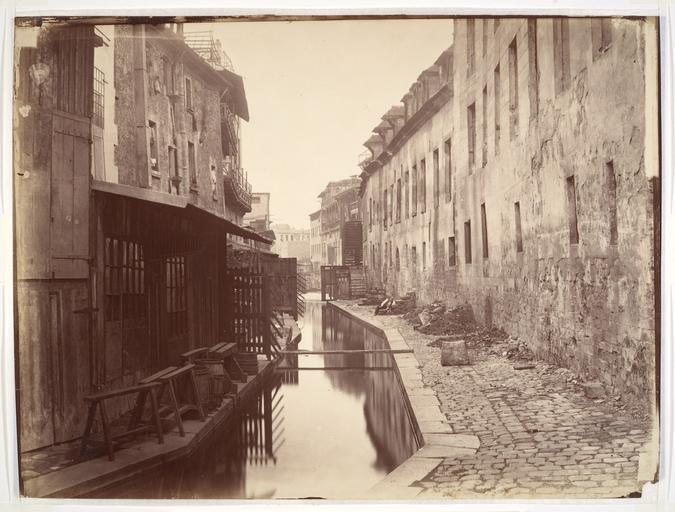MAKE A MEME
View Large Image

| View Original: | Charles_Marville,_La_Bièvre,_ca._1865.jpg (3968x3008) | |||
| Download: | Original | Medium | Small | Thumb |
| Courtesy of: | commons.wikimedia.org | More Like This | ||
| Keywords: Charles Marville, La Bièvre, ca. 1865.jpg As the official photographer of the city of Paris Charles Marville was charged with documenting the massive transformation of the city brought about by Napoleon III and his city planner Baron Haussmann In the early 1850s the Emperor proposed a network of grand boulevards that would plow through the narrow winding streets and overcrowded slums of Paris Marville methodically recorded the streets and buildings slated for demolition preserving an image for future generations Although we may now look back at pictures like this one with nostalgia for a lost Paris to Marville and his audience such scenes evoked a less bucolic reality-the Bièvre was essentially a waste system for twenty-four tanneries twenty-one leather factories nine starch and three dye manufacturers a paper mill two cotton and two flour mills four laundries a soap and candle factory and assorted other industries Shortly after Marville made this photograph the Bièvre was simply covered over and tied into the Paris sewer system One motivation for Napoleon III's urban plan was to ease military movement and make it more difficult for revolutionaries to barricade narrow streets and control sections of Paris but many of his efforts were genuinely geared toward transforming Paris into a safer healthier more modern city ~ 1865 Albumen silver print from glass negative Size cm 27 8 37 6 Institution Metropolitan Museum of Art object history exhibition history credit line Purchase The Horace W Goldsmith Foundation Gift through Joyce and Robert Menschel 1988 265932 accession number 1988 1071 PD-100 Photographs of Paris by Charles Marville Images of Paris from the Metropolitan Museum of Art Photographs in the Metropolitan Museum of Art Bièvre River in Paris 1865 in Paris 1865 photographs | ||||